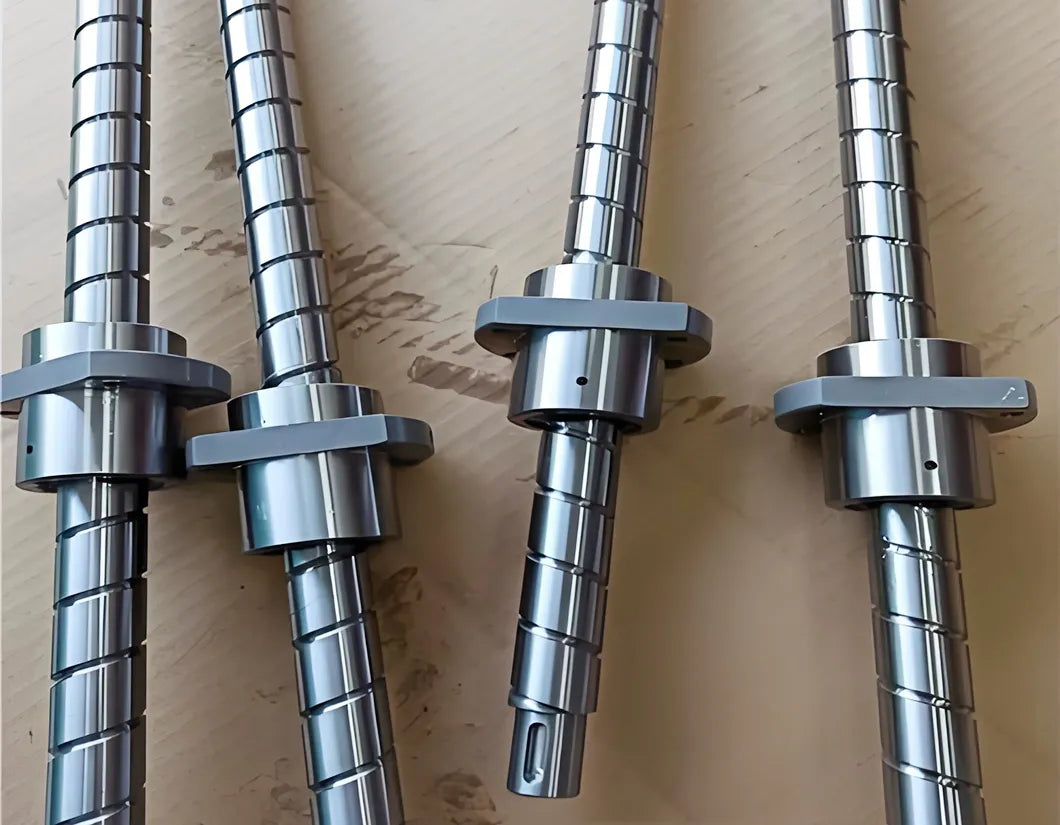Ball screws are critical components in many modern machinery and automation systems, providing precise linear motion and high efficiency. One of the key specifications of a ball screw is its lead, which plays a significant role in determining the performance characteristics of the screw. In this article, we will explore what ball screw lead is, how it is defined, its importance in various applications, and the factors that influence its selection.
1. Understanding Ball Screws
Before delving into the concept of lead, it is essential to understand what a ball screw is and how it functions. A ball screw is a mechanical device that converts rotational motion into linear motion. It consists of a screw shaft with a helical groove and a nut that contains balls. As the screw rotates, the balls circulate within the nut and the groove, allowing for smooth and efficient linear movement.
2. Components of a Ball Screw
Screw Shaft: The main component that rotates to create motion.
Nut: The component that moves linearly along the screw shaft as it rotates.
Balls: These are the rolling elements that reduce friction between the screw and nut, allowing for smooth motion.
End Caps: These are used to contain the balls within the nut and guide them back into the screw groove.
3. What is Ball Screw Lead?
3.1 Definition of Lead
The lead of a ball screw is defined as the distance the nut moves along the screw for each complete revolution of the screw. It is a crucial parameter that affects the speed and precision of the linear motion provided by the ball screw. The lead is typically measured in millimeters (mm) or inches.
3.2 Relationship Between Lead and Pitch
It is important to distinguish between lead and pitch:
Pitch refers to the distance between adjacent threads on the screw. It is a measure of how tightly the threads are wound.
Lead is calculated based on the pitch and the number of starts (the number of parallel threads) on the screw.
3.3 Types of Leads
Ball screws can have various leads depending on their design and intended application. Common leads include:
Standard Lead: This is the most common type, providing a balance between speed and precision.
High Lead: A larger lead allows for faster linear movement but may sacrifice some precision. This type is often used in applications where speed is more critical than accuracy.
Low Lead: A smaller lead offers greater precision and control over movement, making it suitable for applications requiring high accuracy.

4. Importance of Ball Screw Lead
4.1 Speed and Efficiency
The lead of a ball screw directly influences the speed at which a system can move. A larger lead means that the nut travels a greater distance for each revolution of the screw, allowing for quicker movements. This is particularly beneficial in applications where rapid positioning is essential, such as in CNC machining or robotics.
4.2 Precision and Control
While a larger lead allows for faster movement, it may compromise precision. Conversely, a smaller lead provides finer control over movement, which is crucial in applications requiring high accuracy, such as in medical devices or precision manufacturing. The choice of lead must align with the specific requirements of the application.
4.3 Torque Requirements
The lead also affects the torque needed to turn the screw. A larger lead generally requires less torque to move the same load compared to a smaller lead. This is an important consideration in the design of drive systems, as it can influence the choice of motors and power sources.
4.4 Load Capacity
The lead of a ball screw can impact its load capacity. Generally, ball screws with a smaller lead can handle higher loads due to the increased contact area between the balls and the screw. This is an important factor in applications where heavy loads are involved.
5. Factors Influencing the Selection of Ball Screw Lead
When selecting a ball screw for a specific application, several factors must be considered:
5.1 Application Requirements
The specific requirements of the application, such as speed, precision, and load capacity, will dictate the appropriate lead. For example, a high-speed application may benefit from a larger lead, while a precision application may require a smaller lead.
5.2 Machine Design
The overall design of the machine or system in which the ball screw will be used can influence the choice of lead. Space constraints, mounting configurations, and the type of drive system can all play a role in determining the optimal lead.
5.3 Material and Construction
The materials used in the construction of the ball screw and nut can affect performance characteristics. For instance, high-strength materials may allow for a larger lead without compromising load capacity.
5.4 Cost Considerations
Cost is always a factor in the selection of components. While high-performance ball screws with specialized leads may offer superior performance, they can also be more expensive. Balancing performance with budget constraints is essential.
Summary
In summary, the lead of a ball screw is not just a technical specification; it is a critical factor that influences the overall performance of machinery and automation systems. Whether in manufacturing, robotics, or any application requiring precise linear motion, understanding and selecting the appropriate ball screw lead is essential for achieving optimal results.
If you have related needs, please contact us immediately and we will provide you with the best offer!

